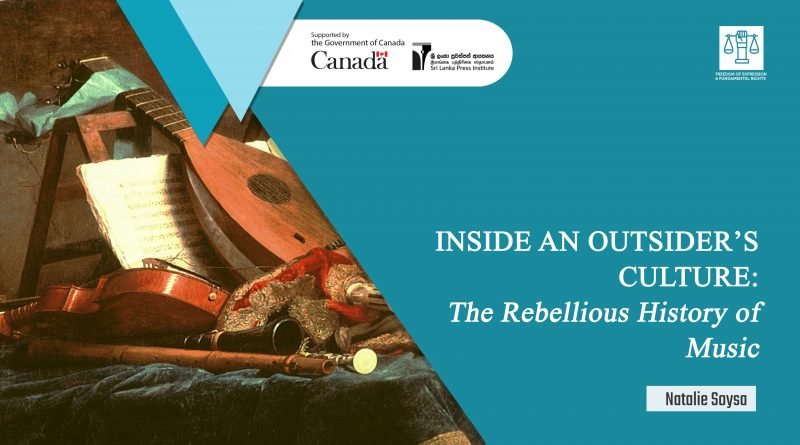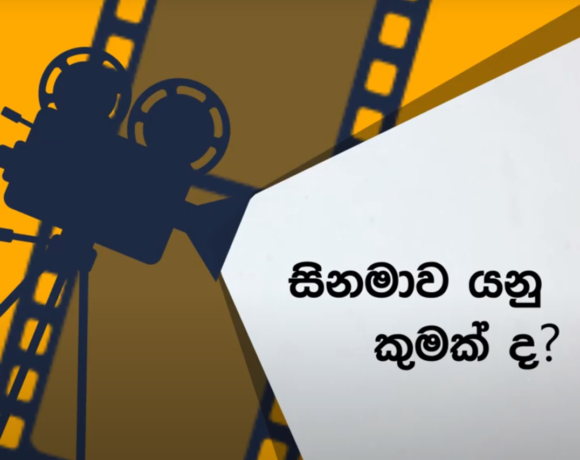Natalie Soysa
– SAM DUNN, Metal: A Headbanger’s Journey
If you think heavy metal is about loud music, then you might be in need of a reality check.
While it is a genre of music on the one hand, it also is, as filmmaker Sam Dunn puts it, a culture of outsiders. Heavy Metal is a political phenomenon and to understand it, we must look beyond the music and delve into what the music stands for; how is it that this counterculture has stood the test of time and continues to bring in new generations of fans to its altar? Metal comes from a long tradition of rebellion and sonic anarchy that began along the banks of the Mississippi River in the late 19th Century and continues to exist within society’s outsiders, across the planet to date.
Combining African musical traditions with Pentecostal gospel music, the Blues are arguably the Granddaddy of what we call Heavy Metal today. But Metal is not its only progeny; the Blues would be the starting point for other genres including Funk, Hip Hop and Pop. While some sounds retained the genre’s rebellious roots, others merely used the sonic influences of the Blues to create their own edition of the sound. But the Blues, without being called ‘The Devil’s Music’ tends to lose its appeal to outsiders.
When the Blues was first dubbed Devil’s Music in the early 20th Century, it was because people who didn’t get it, feared it’s seductive power on those who did. We must remember that this music came out of Black communities who were brought to the New World as slaves and have, to a great extent continued to retain their outsider status in America. If the Black Lives Matter riots taught us anything, it’s that America’s racist legacy continues. But here’s the thing – the best cultures know how to celebrate insults and redefine them. Today, when we call Blues or Rock or Metal the Devil’s Music, it’s not about the music having satanic leanings. Metalheads yearn for the dark side because it’s better than running toward the hypocrisy of modern religion and world order.
While the influence of the Blues on sounds like Funk and Hip Hop are more obvious, it might be strange to think of Heavy Metal as Black music – especially when there are more White bands in the industry. But when Heavy Metal was born, its specific birthplace in the industrial towns of England in the 70s became about defending the poor man’s place in the fight against systemic power structures that support the rich. So it continued the rebellious tradition of the Blues. It sustained its support of underdogs and outsiders trying to make it in an insider’s world.
When the 80’s avatar of metal evolved, it exploded with a burst of colour, big hair and wild outfits that mimicked the chaos of the world around it. Feminist movements were evolving as was our idea of gender. So this blend of heavy metal responded to the needs of its time again, defiantly standing for and comprising a new breed of outcasts, not fitting in for not conforming to society’s idea of gender or normalcy in any sense. Dubbed ‘Hair Metal’, the bands of the time sonically and culturally took metal away from the angry, white, hetero-male identity that the genre was beginning to acquire. In doing so, it also took the genre to commercial popularity. While the rebellion came in the form of leather and lipstick this time, it never veered away from its purpose as an anarchist phenomenon.
A decade later, the sound would find itself washed up on Sri Lanka’s shores.
Twenty years on and what heavy metal has done for Lankan outsiders is undeniable to those who take the time to listen instead of recoiling or dismissing it as noise. Unlike the Delta Blues, Heavy Metal is a complex powerhouse of sound and requires a certain intelligence to be appreciated. In this sense Dunn’s argument is fair: it is ok that you don’t feel the hair-raising, overwhelming surge of power that metal offers its believers, because it is an outsider’s sound.
Outsiders here are those that don’t follow the status quo. They don’t look, think or even vote with divisions of race, religion or majority. And the music responds to this rebellion of ideas. Songs like Hollow’s Red Scarf Man and Death to the King by Ancient Curse made a direct reference to the leadership of the country when they were first released, and Paranoid Earthling’s entire repertoire addresses the island’s messed up state of affairs. They remind us that we live in a free world: dead, blind dumb.
The music however, while being relevant to Sri Lankan audiences, only makes up one half of this outsider’s culture. Its anarchist soul resides in the thousands of Metalheads who grace the gigs, buy the records and find themselves insiders of a culture that gets them. In fact, there would be no bands, no music, no scene if there was no demand for a countercultural response. No different to how the Blues responded to America’s racism, Hip Hop to gang violence and police brutality, and how hair metal helped redefine our ideas of gender and identity: heavy metal in Sri Lanka too, is a response to the questions some of us were already asking.
Sri Lanka’s culture of outsiders are made up of headbangers; each pit and every hand raised in horns are symbols of a loud rebellion that has existed for decades. We have another name for outsiders here, we call them Metalheads.








